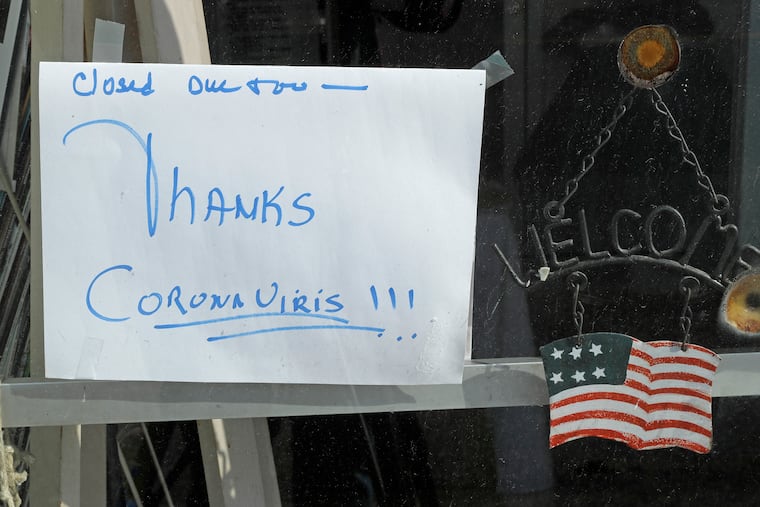A little known clause in the CARES Act can mean big savings for some small businesses
This SBA loan program has been in existence for many years but has been sweetened dramatically by the recently passed CARES Act.

When the CARES Act was passed back in late March, much attention was paid to the relief given to small businesses by the Paycheck Protection Program. But another, lesser-known part of the bill is also providing for many small-business owners who are smart enough to take advantage of a significant opportunity. That portion has to do with a loan program from the Small Business Administration.
The program, called Section 7(a), has been in existence for many years. And like the Paycheck Protection Program, it’s delivered through the SBA’s member lenders. But, unlike PPP, this is not a grant program. It’s a loan that can be used for purchasing equipment and real estate, and even to acquire another company. Or it can be used just for working capital. Because the loans are backed by the SBA, bankers can provide this crucial type of financing for small businesses that otherwise wouldn’t be able to receive the help.
Now, thanks to the CARES Act, these loans are even more enticing.
That’s because for any Section 7(a) loan closed before Sept. 27, 2020, the CARES Act provides for the forgiveness of the first six months of both principal and interest payments, plus any related fees, for the borrower. In real terms, it means that a small-business owner can save about $33,000 on a $500,000 loan.
To qualify for this loan — that lets you borrow as much as $5 million — you must have fewer than 500 employees or less than $7.5 million in average annual receipts. You must operate as a for-profit business, be based in the United States, and not be delinquent on any debt (such as taxes) owed to the government.
You’ll also have to substantiate how you’re using the funds. Although the SBA guarantees these loans, the banks issuing them still go through due diligence to ensure that the application is genuine and that a borrower has the means to pay back the loan, and collateral will likely be needed. Interest rates are negotiated between you and your bank but are subject to SBA maximums, which are pegged to the prime rate, the LIBOR rate, or an optional fixed or peg rate, and the maturity can be up to 25 years for real estate or 10 years if you’re just borrowing for working capital.
“Small-business owners should provide key documentation to support the 7(a) loan application process, including business and personal tax returns for the last three years, personal financial statements, a business debt schedule as well as a description of the project or use of proceeds,” said Tom Pretty, who heads SBA Lending at TD Bank. “Additionally, borrowers should be prepared to talk about how COVID-19 impacted their business and how they are planning to succeed and move forward through these unprecedented times.”
So, yes, there will be due diligence that you will need to complete. But just think of the opportunities. Say you know of a competitor who is going out of business or you have your eye on a piece of used equipment that has come up for sale. Perhaps you want to acquire the assets of another strategic company or buy a key piece of real estate that will benefit your business in the long run. Or you just need working capital to finance the hiring of new employees or the purchase of inventory. You can use the loan for all of these reasons and reap an enormous discount. But hurry: You must close your loan before Sept. 27, and other small-business owners are also getting in line.
“We expect 2020 and 2021 to be busy times for SBA lending,” Pretty said. “It appears that the economy will pull back, which could present an opportunity for business owners to buy assets at reduced prices, but could also result in tighter credit from lenders.”
Steve Bulger, the acting Mid-Atlantic Regional Administrator for the Small Business Administration, agrees. “We’ve already paid over $2 billion in loan payments and that interest and principal has already been made in the first two months of April and in May,” he said. “It’s helped over 280,000 small businesses. We’ve been able to give them this debt relief and we are getting good feedback from them saying it made a big difference. They don’t have to use their tight cash reserves to pay for loans. The program has been very well-received and it’s clearly been a winner for small businesses and the economy.”
We know that many small businesses — particularly those in retail and the restaurant industries — have suffered significantly from the shutdowns caused by the COVID-19 outbreak. However, millions of small firms — essential businesses and others in the Philadelphia area that managed to operate during the shutdown — are emerging from the shutdown wounded, but mostly intact and looking to grow. Thanks to the CARES Act, many of these businesses can tap into the SBA’s Section 7(a) program to finance this growth, and receive a big discount on their loans.
» HELP US REPORT: Are you a health care worker, medical provider, government worker, patient, frontline worker or other expert? We want to hear from you.
“With disruption comes opportunity; there is no doubt about it,” Bulger says. “History has shown that time and time again.”
Gene Marks is a certified public accountant and the owner of the Marks Group, a technology and financial management consulting firm in Bala Cynwyd.